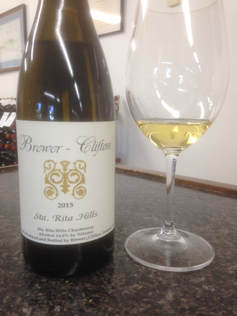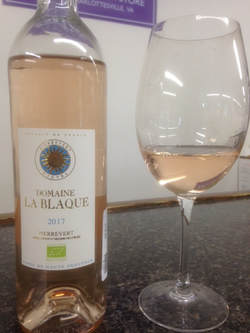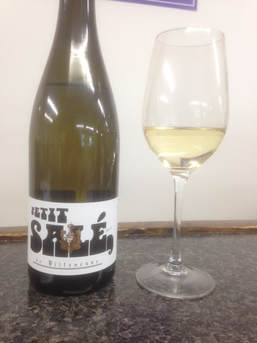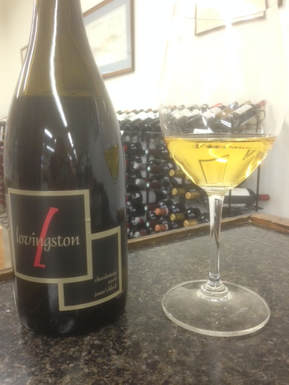 When the resurrection of Australia's wine image is finally complete in the United States, converted back to a country of great diversity from the awful era of mass marketed 'critter labels', Yalumba will be considered one of the great wineries that survived and thrived on both sides. Coming up on 170 years of existence, the winery certainly has roots to the old school, but also lead the way in the Australian emergence during the 1990s-2000. They were among the very first to experiment with alternative closures like screw caps for higher quality wines well before tainted corks made it a worldwide issue, as well as championing grape other Rhone varieties like Grenache and Viognier in the face of large scale Syrah/Shiraz planting and promotion. Most importantly they never went overboard with expansion and brand promotion as they have grown, sticking to core ideals of quality for all their different levels of wines. Today they are among the largest wineries in the world to have 100% of their productions sustainably farmed and certified vegetarian/Vegan friendly. All without loosing any of their Aussie character and deliciousness. While many Australian Grenaches tend to be overblown and boozy, this is the picture of surprising balance and restraint. Pale ruby in the glass with an almost Pinot Noir-esque transparency, the aromas are warm briary fruits and dried spices but without any sweetness or pruney heat. On the palate the Pinot Noir comparison comes in again, with the super fine tannins and hints of cranberry skin tartness behind the round soft mouthfeel. This could almost be mistaken for a Pinot from a warmer climate but for the warmer berry fruits that show through. A Pinot drinker WOULD definitely enjoy this for the smoothness, while a Rhone wine fan would enjoy the roundness of body and complexity of fruit. Incredibly all-purpose and tasty with bold foods or enjoyed on its own.
0 Comments
 It isn't often that we can offer a tasting on wine that has equally great press from the 3 major wine review organizations we observe the most. It's even less frequent to be able to offer discounts on that wine. Lesser wines are frequently snapped up at this price in just a few weeks with even the slightest praise. Brewer-Clifton has been a leading force in the emergence of the Santa Rita Hills over the last two decades, creating vineyard distinctive Pinot Noirs and Chardonnay from local sites that captured many awards and high scores over the years. They were also one of the first to create an urban tasting room in Lompoc, what later became known as the Lompoc 'Wine Ghetto' and an integral part of customers tasting and discovering the up-and-coming wineries. At times their opulent, even super-sized style has drawn criticism for big alcohol and a perceived unbalance of fruit and (lack of) acidity, especially in their single vineyard wines. Over time, and especially since they have been able to get their fruit from 100% estate controlled vineyards, they have reached more of an equilibrium. While nobody will confuse these wines with Burgundy, or even a Californian winery emulating Burgundy. they have locked in on their style and are delivering on their concept. Bright golden in the glass, the first whiff leaves no secrets as to what the wine is, with loads of sweet citrus and lemon curd as well as a moderate touch of toasty oak. This want to boisterous Californian sunshine in a glass, and it's hitting on all cylinders. The palate is lush and robust as expected, but isn't dominated by buttery creaminess, with the rich fruit instead supported by a surprising line of lemon zest that brings out tons of complex orange and white fruit tones and finishes, dare I say, quite light on its feet. A big wine that deserves to be paired with an equally big dish, like scallops in a butter sauce or salmon, but don't be afraid of enjoying the subtle character hiding beneath.  As we drift towards the tail end of Summer, the enthusiasm for Rose wines tends to tail off as well. Our selection definitely starts to dwindle when some of our more limited favorites start to sell through, but we never get bored with having a great selection. We enjoy recommending them well into the holidays for Thanksgiving and big family feasts as a great all-purpose wine, and the sturdy ones not only survive well into the next year but actually thrive and evolve over several years. These aren't wilting flowers like most mass marketed bottlings, but distinct and character-filled wines with serious personality. This has been a favorite for several vintages now, but was delayed coming over due to a logistical issue. Pierrevert is a small wine subregion in Provence rarely seen, mostly because there are only a few wineries that even exist there. The vineyards are based right at the North-Central edge of the appellation near the foot of the Alpes de Haut-Provence, giving them just as much mountain influence as they do Mediterranean. While we don't have any additional frame of reference from Pierrevert, we can definitely say that La Blaque represents the region as having something truly distinct about their wines. Classic salmon color with a big whiff of strawberry leaves and dried watermelon and red fruits, but what has always separated this wine from the massive floods of other Provence Rose out there is the underlying, background aromas. Hints of anise and black spice, almost gamey as the wine breathes out in the glass, which sounds unusual in abstract but is delicious when it hits your senses. Think of the first time you tried grilled watermelon or peaches (or if you haven't, you REALLY need to try it this weekend!), and the contrast of juicy/sweet with the charred and caramelized grill marks. The palate is equally juicy and quenching, surprisingly softer on the acidity which really brings out the watermelon through to the finish. A dynamite picnic wine that works with fruit based and lighter savory dishes.  While warmer climates generally produce fruiitier and lower acidity wines than comparatively cooler ones, there are always tricks that can help a winery fight against those trends. Cooler sub-climates with windier conditions and less fertile soils can restrict a plants vigor, slowing the grape's sugar development which keeps their alcohol levels lower. Farming the vineyards organically or Biodnamically also lowers the plant's vigor, and when the plants are healthy result in big flavors without accompanying high alcohol levels. Why, you ask, would a winery try to make their wines that way? To many wine drinkers, the subtle flavors that make wines unique from each other from vineyard to vineyard are enhanced by that tingle of acidity, and a less heavy or boozy texture also lets that character though. Producers like Chateau de Roquefort are great examples of those beliefs, a long time independent producer that embraces those philosophies, and their wines are often heralded as standout wines in a region that has a reputation for widespread mediocrity. A blend of Clairette and Vermentino, staples varieties of the Provence wine environment, this has an impressively fresh and expressive aroma of warm flowers, exotic oils, and fresh Mediterranean citrus. The palate surpasses the nose with a surprisingly round and lush mouthfeel (especially for a wine that weighs in at only 11.5%abv), bringing out loads of intensity to the citrus character, as well as a lengthy finish that shows absolutely zero signs of any sweetness. This could be (and often is from lesser producers) a wine that gets dismissed as watery and thin, lacking distinction. In the hands of such a dedicated producer they can get every last drop of energy out of their vineyards to make a wine that is every bit as fascinating as one from the more vaunted French regions. Pair this with a great seafood dish, someplace you would usually try a Muscadet or a Chablis.  Years ago when we first met the family and winemaker behind Lovingston (one of the few wineries where those two entities are still closely linked), the vision going foreward was as much about what they planned to do as it was what they did NOT want. Despite public pressure for certain styles and varieties of wines, they have always followed their own compass for what their vineyards will produce the best. How else would they have been able to make such an early move to planting Pinotage, now one of their flagship wines and one of the few standout producers of the variety in the country? After avoiding Chardonnay for nearly a decade, a half acre block was planted and the vines are now mature enough to create this stand-alone varietal wine, but as always the folks at Lovingston have put their own twist on it. Instead of oak barrels, Acacia wood barrels are used for aging, which provides a distinct aromatic while avoiding the typical toasty caramel notes from charred oak. This is a practice many white wine producers across the world have been doing when making wines that need some extra richness from time in barrel but still want more of the grape's natural perfume to show through. Intensely golden color in the glass, the aromas are all creamy lemon curd and melon zest, with a slight woody note that calms down quickly as the wine opens up. In the mouth the texture and flavors are surprisingly rich and creamy without any butttery or charred flavors, almost a reduction sauce of lemon curd and grape must, but with plenty of citrus zest and acidity on the palate remaining to provide a long dried fruit finish. Fans of the more typical oak aged Chardonnay may feel like they are missing those flavors here, but if oak and butter are all you taste, the nature of the vineyard is lost. Acacia barrels provide a boost without obscuring what can make the wine distinct. And from Lovingston, distinct is what we want and expect. |
The Best of the Best.We offering free tastings on these wines in the store every Thursday and Friday, and a 10% discount off the retail price through the duration of the day. Come on by and give them a try! Archives
July 2024
Categories |
Location |
|

 RSS Feed
RSS Feed